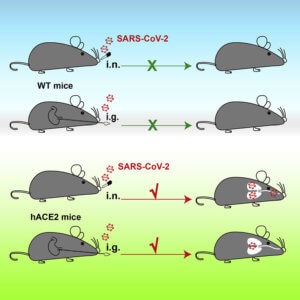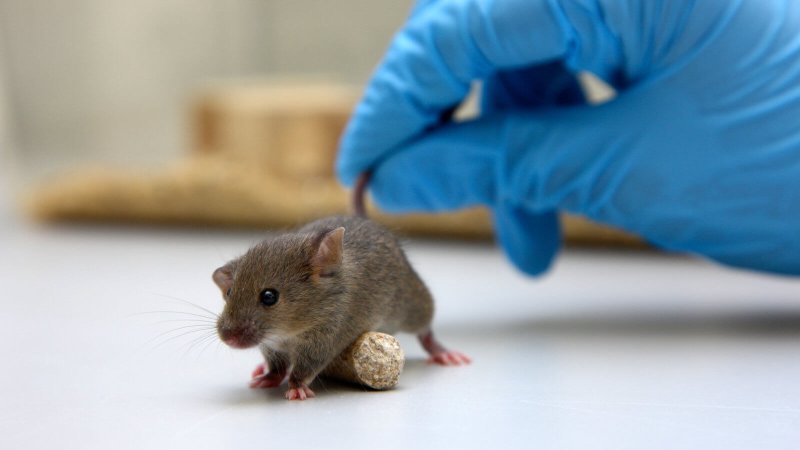Human cells and mice cells each express their own version of angiotensin converting enzyme 2 (ACE2), the membrane-bound receptor that serves as a convenient means of ingress for SARS-CoV-2. Because human ACE2 happens to be more welcoming than mouse ACE2, human COVID-19 isn’t easily recapitulated in ordinary mouse models. Genetically engineered mouse models, however, promise to advance studies of COVID-19, whether they aim to detail disease mechanisms or evaluate COVID-19 vaccines and therapeutics.
To ensure that SARS-CoV-2 gets a warm welcome in laboratory mice, scientists representing several research institutions in China have generated a mouse model expressing human ACE2 (hACE2) using CRISPR-Cas9 knock-in technology. The new model captures several features of human COVID-19, including the development of interstitial pneumonia; higher cytokine levels and greater lung damage with increasing age; and gastrointestinal symptoms.
…
Future studies using this mouse model may shed light on how SARS-CoV-2 invades the brain and how the virus survives the gastrointestinal environment and invades the respiratory tract. “The hACE2 mice described in our manuscript provide a small animal model for understanding unexpected clinical manifestations of SARS-CoV-2 infection in humans,” concluded co-senior study author Chang-Fa Fan of NIFDC. “This model will also be valuable for testing vaccines and therapeutics to combat SARS-CoV-2.”
































